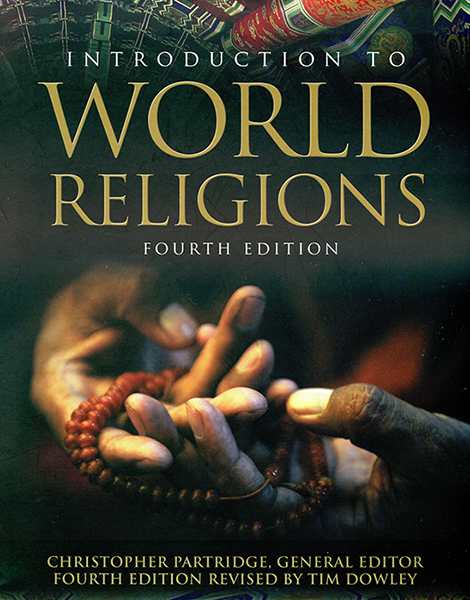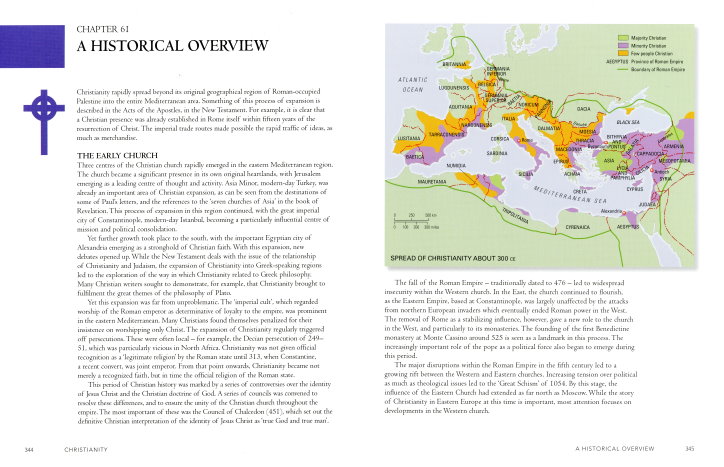Book review: Introduction to World Religions
As the world becomes ever more interwoven with different faiths, there’s never been a better time to read about the world’s religions.
Religion has always played a major role in human society. From the dawn of civilisation right up to the present, faith has defined all societies in profound ways and is likely to do so until the very end. Little else will shape the character of a society, be that for good or otherwise.
According to census data, Australia is an overwhelmingly Christian nation. Yet whilst the Christian faith may dominate the hearts of many Australians and churches remain the most common houses of worship in our towns and cities, there exists a wonderful tapestry of other religions in Australia that contribute to our nation’s wealth and understanding of humanity and truth. Hinduism, Judaism, Islam, Buddhism and Sikhism all have active communities whose adherents seek to understand the world we live in and make it a better place.

Australia’s success in creating a multicultural nation has depended in great part on religious tolerance and respect. Whilst we celebrate these differences and diversity, there are times when relations becomes strained. One cannot ignore the hostile press that Islam has received in recent years.
As more people of different religions come together in a globalised world, questions inevitably arise. Are jihad and shari’a integral to Islam? Is Buddhism a religion or a philosophy? Who wrote the Christian bible? Understandably, people become curious.
This is where Christopher H. Partridge’s Introduction to World Religions becomes an invaluable resource for any person who seeks to understand the various religions that make up contemporary society.
Partridge starts with the very basics: What is a religion? Once defined, his book explores some of the very earliest religions from around the world, including those of the ancient Egyptians, South Americans, Europeans and even indigenous Australians. Whilst the barbaric practices of some early religions may surprise many readers (Viking chieftain funeral rites were especially shocking), the book is at pains not to judge but merely describe. Introduction to World Religions is not interested in critiquing religious practice past and present but about understanding it. Each religion is described in an objective and dispassionate manner so as to give the reader a clear appreciation of the history, practices and values of each faith. It is for this reason that the pejorative term cult is generally avoided.
The greatest strength of this book is that it is written for people who may have had little or no familiarity with the religion that they’re learning about. Religious terminology can be quite elaborate but the book is written so as to explain everything clearly. A comprehensive glossary has also been included in the back of the book if required.
Introduction to World Religions is beautifully illustrated with charts and graphs depicting important chronological and geographical development or liturgical practices. Important quotations from holy texts or religious founders are included in sidebars to provide context.

Calibration
One of the key tests of a book such as this is to see how one’s own religion is described. Since I am a Roman Catholic, I was keen to read the chapter on Christianity to assess the information from the perspective of someone with some familiarity. The Christianity chapter delved into the origins of the faith from its Jewish birth through to the life of Jesus Christ and his legacy in founding the religion. The chapter also described key festivals, examined how the Bible was written and provided an overview of the various schisms that the church experienced, including the Protestant Reformation. I certainly learnt a few new facts about my own faith.
My wife, who is a Theravada Buddhist was initially less impressed with the chapter on Buddhism. She felt that it failed to delve sufficiently into the various aspects of her religion. On the contrary, having just the slightest familiarity with the religion myself, I considered it to be very informative and helpfully joined together many of the strands of practice that I’d witnessed but never really understood.
In reality, this is the very point of a book like this. Introduction to World Religions is not intended to instruct in theology, but rather provide a broad overview of religions by providing key facts and summaries about each one. A book such as this cannot help us understand the meaning of other religions from the perspectives of our own traditions nor is it intended to strengthen belief in any particular faith. That is what makes this dispassionate reference so valuable.
Discovery
In recent years, Islam has been placed under much scrutiny in Australia and the West generally. In our news we see images of Islamic State and hear endless paranoia about Halal certification or the wearing of the niqāb, burqua or hijab by women. Like many Australians, I knew little about Islam and felt that a book such as Introduction to World Religions might just be the right place to gain some objective understanding of this important world religion.
I wasn’t disappointed. Introduction to World Religions provided a clear explanation of the origins of Islam, the life of Mohammed and the founding principles of the Muslim faith. An historic account was provided of how Islam was founded in Mecca and Medina and was later introduced to communities across the Middle-East and into Asia. Most importantly, the book was quick to dispel a much-exaggerated myth:
Most of the inhabitants of these regions (where Islam spread) were not immediately converted to Islam, but became protected minorities. The military expeditions, though dignified with the title of ‘holy war’ (jihad), were raids for booty – and not to make converts. The idea that opponents were given the choice of ‘Islam or the sword’ is false, except in the case of pagan Arab tribes.
Introduction to World Religions, p. 391
The book also speaks honestly about concepts such as jihad or political ideals such as the caliphate; aspects of Islam that often cause discomfort in the West. Perhaps what I found to be the most valuable in the Islam chapter was the explanation of Ramadan and Eid al-Fitr. Ramadan is such an important festival in the Islamic calendar and yet so few Australians really know much about it. Ramadan is a time of reflection and sacrifice for Muslims who fast for a month to commemorate the first revelation of the Quaran to Mohammed.
The other aspect of Islam that intrigued me was the hajj, which is the pilgrimage that each able-bodied Muslim should make at least once in their life to the Grand Mosque (Masjid al-Haram) in Mecca. Each year, Masjid al-Haram is visited by millions of people during Dhu al-Hijjah, the last month of the Islamic calendar. Incidentally, it is Masjid al-Haram that all Muslims face when praying, so it is great significance. I must admit to being rather intrigued by the history of that site; there is plenty of information about it on the internet and even some concern about its tragic destruction.
The Little Guys
When I sought out Introduction to World Religions, I was keen to better inform myself about the ‘big five’ religions, but of course the world is made up of much more than that.
An entire chapter was dedicated to each of Jainism and Sikhism. I was rather surprised to discover that I’d never heard of the former religion and realised that I knew little of the latter (despite having worked with many Sikhs). The book also explored other smaller religions within combined chapters including Bahá’í, Zoroastrianism, Mormonism, Taoism, Confucianism and the Hare Krishna movement. All-in-all, Introduction to World Religions really is quite comprehensive.
Perhaps the only surprise was the almost complete absence of any mention of Falun Gong; a relatively new religious movement that is much detested by the Chinese government. Falun Gong was incorporated into a dedicated chapter entitled “New Religious Movements” which explored various groups that have arisen in the past 150 years, both malevolent and benign.

Understanding
Perhaps the greatest lesson that comes from reading a book such as Introduction to World Religions, which explores so many belief systems, is that all of the religions that persist and grow endorse the “Golden Rule“. In Christianity, this universal law of reciprocity was summed up by Jesus who asked followers to “Do to others what you would want them to do to you” (Matthew 7:12, Luke 6:31) but is reflected in every major religion in some form.
This is the most important message of religion but alas one that is too easily forgotten. If nothing else, a book such as Introduction to World Religions will make the reader understand that this is the fundamental lesson of all religions. It’s a core value of humanity.
Religion is an intensely personal matter. Some people are very devout whilst others profess no religious belief whatsoever. Irrespective of one’s own belief system, Introduction to World Religions is a pathway to better understanding. Like developing fluency in a foreign language, learning about someone else’s belief system helps one better understand one’s own. Being tolerant of the multitude of religions in the community is one thing, but understanding a little about each one is something else altogether.
In a world that can appear riven with conflict at times, perhaps we can all benefit from understanding a little more about each other. To this end, I highly commend Introduction to World Religions.
The fourth edition of Introduction to World Religions (ISBN 978 0 7459 5687 9) is published by Lion Hudson.
Comments
No comments have yet been submitted. Be the first!